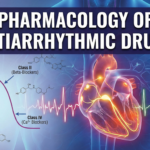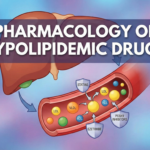Zero-Order Kinetics
Definition:
In zero-order kinetics, the rate of drug elimination is constant and does not depend on the drug concentration. This is often seen with drugs that saturate the body’s ability to metabolize or eliminate them.
Equation:
The rate equation for zero-order kinetics is:
\text{Rate} = k
Where (k) is the rate constant.
Clinical Importance:
Zero-order kinetics is significant in drugs, where overdosing can be dangerous. The body cannot quickly eliminate these drugs at higher concentrations, leading to potential toxicity.
Drug Examples:
Calculations:
To find the rate constant (k), you can rearrange the integrated rate equation:
k = \frac{[A]_0 - [A]}{t}Graphical Representation:
Refer to this page for further reading, graphs, and example calculations.
First-Order Kinetics
Definition:
In first-order kinetics, the rate of drug elimination is directly proportional to the drug concentration. This is the most common type of kinetics for drug elimination.
Equation:
The rate equation for first-order kinetics is:
\text{Rate} = k[A]
Where (k) is the rate constant and ( [A] ) is the drug concentration.
Clinical Importance:
First-order kinetics allows for easier dose adjustments and is less likely to result in toxicity. The body can more efficiently eliminate the drug when its concentration is high.
Drug Examples:
- Acetaminophen
- Caffeine
- Amoxicillin
Calculations:
To find the rate constant (k), you can rearrange the integrated rate equation:
k = \frac{\ln[A]_0 - \ln[A]}{t}Graphical Representation:
Refer to this page for further reading, graphs, and example calculations.
Understanding these kinetics is crucial for clinicians for effective drug dosing and minimizing side effects. Combining the knowledge of zero-order and first-order kinetics can help create a more comprehensive treatment plan, especially when multiple drugs are involved.
📚 AI Pharma Quiz Generator
🎉 Quiz Results
Medical Disclaimer
The medical information on this post is for general educational purposes only and is provided by Pharmacology Mentor. While we strive to keep content current and accurate, Pharmacology Mentor makes no representations or warranties, express or implied, regarding the completeness, accuracy, reliability, suitability, or availability of the post, the website, or any information, products, services, or related graphics for any purpose. This content is not a substitute for professional medical advice, diagnosis, or treatment; always seek the advice of your physician or other qualified health provider with any questions you may have regarding a medical condition and never disregard or delay seeking professional advice because of something you have read here. Reliance on any information provided is solely at your own risk.









